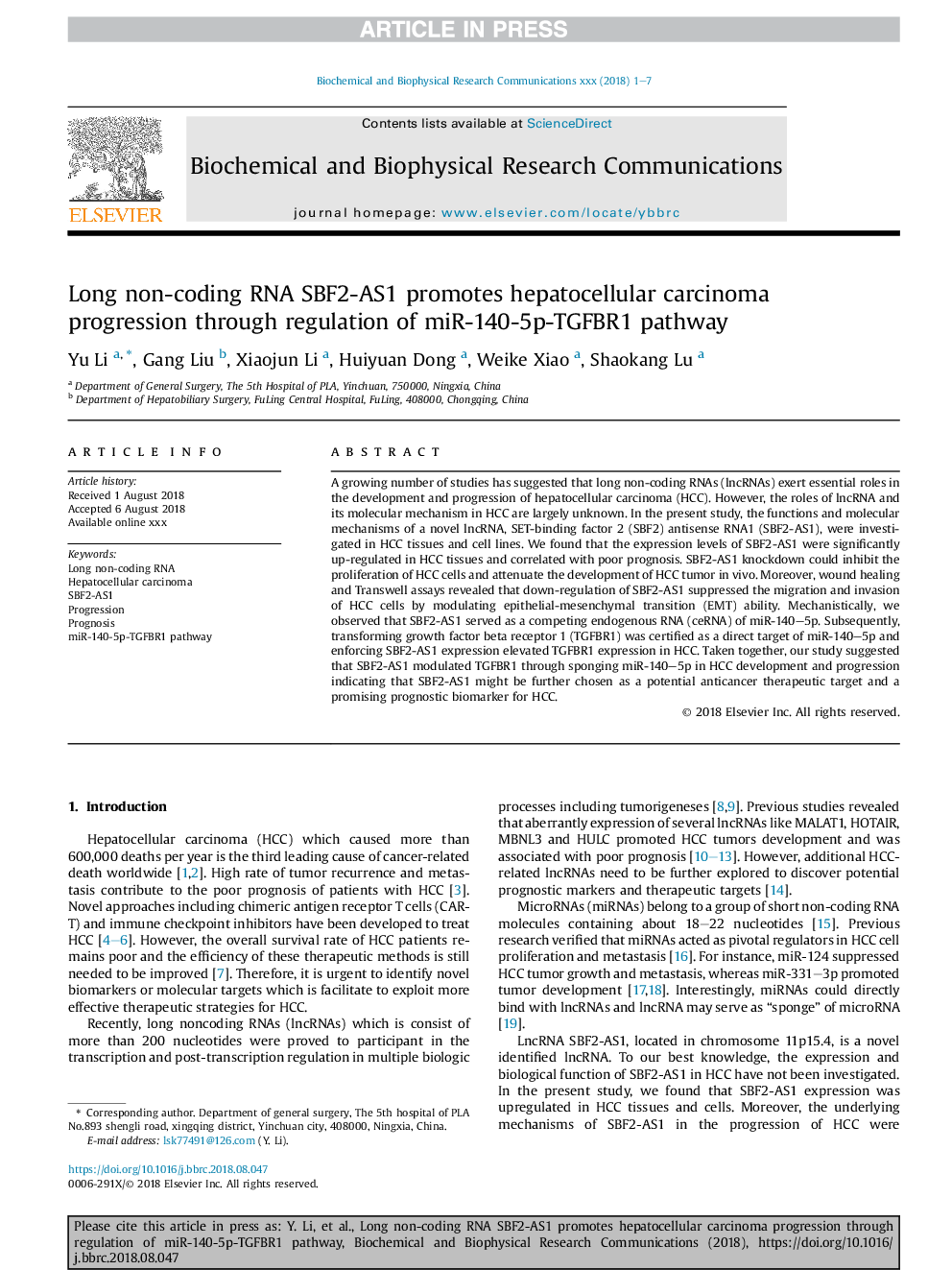| Article ID | Journal | Published Year | Pages | File Type |
|---|---|---|---|---|
| 8961866 | Biochemical and Biophysical Research Communications | 2018 | 7 Pages |
Abstract
A growing number of studies has suggested that long non-coding RNAs (lncRNAs) exert essential roles in the development and progression of hepatocellular carcinoma (HCC). However, the roles of lncRNA and its molecular mechanism in HCC are largely unknown. In the present study, the functions and molecular mechanisms of a novel lncRNA, SET-binding factor 2 (SBF2) antisense RNA1 (SBF2-AS1), were investigated in HCC tissues and cell lines. We found that the expression levels of SBF2-AS1 were significantly up-regulated in HCC tissues and correlated with poor prognosis. SBF2-AS1 knockdown could inhibit the proliferation of HCC cells and attenuate the development of HCC tumor in vivo. Moreover, wound healing and Transwell assays revealed that down-regulation of SBF2-AS1 suppressed the migration and invasion of HCC cells by modulating epithelial-mesenchymal transition (EMT) ability. Mechanistically, we observed that SBF2-AS1 served as a competing endogenous RNA (ceRNA) of miR-140-5p. Subsequently, transforming growth factor beta receptor 1 (TGFBR1) was certified as a direct target of miR-140-5p and enforcing SBF2-AS1 expression elevated TGFBR1 expression in HCC. Taken together, our study suggested that SBF2-AS1 modulated TGFBR1 through sponging miR-140-5p in HCC development and progression indicating that SBF2-AS1 might be further chosen as a potential anticancer therapeutic target and a promising prognostic biomarker for HCC.
Related Topics
Life Sciences
Biochemistry, Genetics and Molecular Biology
Biochemistry
Authors
Yu Li, Gang Liu, Xiaojun Li, Huiyuan Dong, Weike Xiao, Shaokang Lu,
